Key takeaways:
- Participatory budgeting empowers community members to engage in decision-making regarding public fund allocation, fostering ownership and collaboration.
- Community housing is essential for resilience and inclusivity, providing stability and enhancing neighborhood dynamics.
- Challenges in participatory budgeting include ensuring inclusive participation, managing competing interests, and maintaining meaningful discussions under time constraints.
- Successful housing development stems from community collaboration and adaptability, enabling the creation of vibrant, inclusive spaces for residents and businesses.
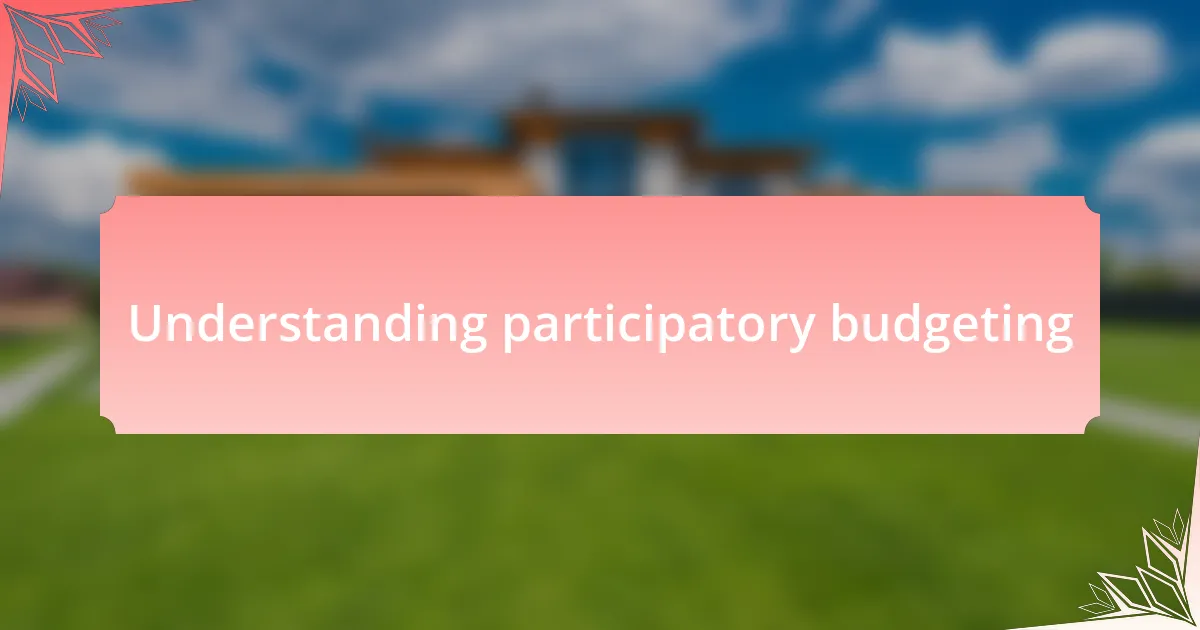
Understanding participatory budgeting
Participatory budgeting is a collaborative process where community members have a direct say in how public funds are allocated. I remember attending my first meeting, feeling a mix of excitement and apprehension. It was a revelation to witness my neighbors passionately discussing their priorities, each voice carrying weight in decisions that truly impact our lives.
This approach shifts power dynamics and invites citizens to become stakeholders in their community’s financial decisions. Have you ever felt like your voice was overlooked in local governance? Participatory budgeting not only gives power back to the people, but it also fosters a sense of ownership and responsibility over community resources. I’ve seen firsthand how people transform from mere citizens into engaged advocates, driven by the collective desire to improve their environment.
At its core, participatory budgeting democratizes the budget process, allowing for a diversity of ideas and perspectives to shape public spending. I remember one discussion where a proposal to enhance green spaces garnered overwhelming support, highlighting how communal aspirations can be realized when everyone feels included. This model not only roots the community deeper in collaboration, but it also strengthens the bonds between residents, fostering trust and camaraderie.
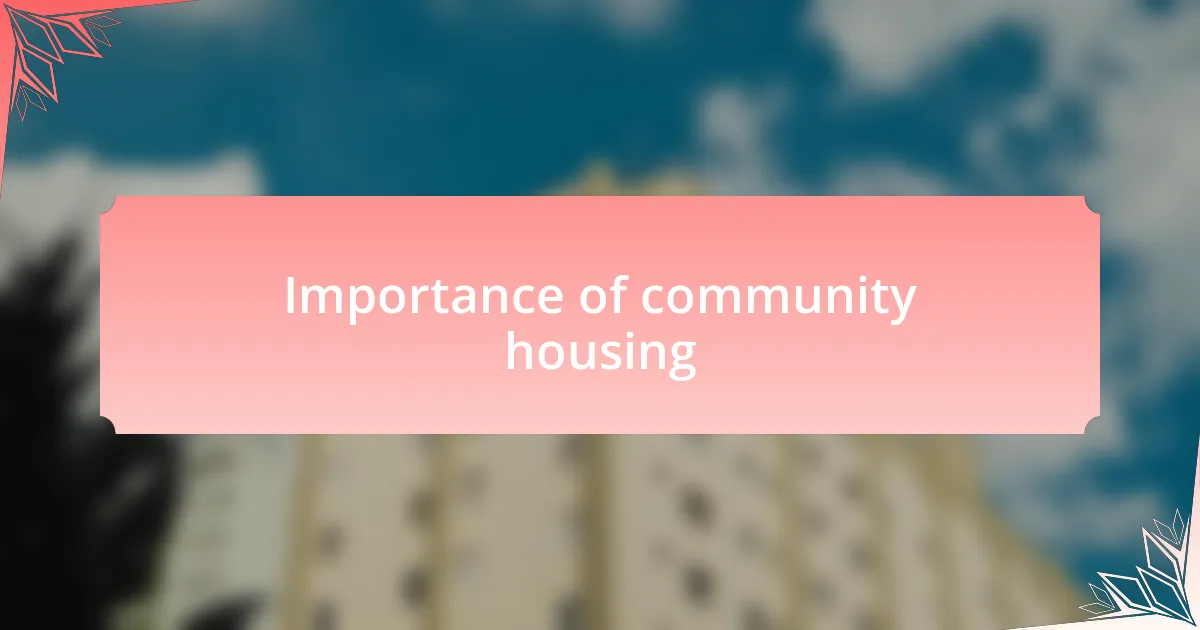
Importance of community housing
Community housing plays a vital role in shaping resilient neighborhoods. I have witnessed how affordable housing options can empower individuals and families, providing them with stability and a sense of belonging. Have you ever felt the anxiety of wondering where you would live next? When people have secure housing, they can focus on other aspects of their lives, like education and employment, which ultimately strengthens the entire community.
Additionally, community housing fosters diversity and inclusivity, creating vibrant environments where various cultures and backgrounds can thrive together. I recall a local festival that celebrated our rich mix of traditions, drawing residents together and promoting understanding. This blend of experiences not only enriches our lives but also promotes a sense of unity, showcasing that everyone has something valuable to contribute.
Ultimately, when a community prioritizes housing, it invests in its future. I’ve seen how well-planned developments can lead to increased local engagement, with residents taking pride in their surroundings and participating actively in neighborhood initiatives. Isn’t it exciting to think about the possibilities that emerge when housing becomes a cornerstone for collective growth and cooperation?
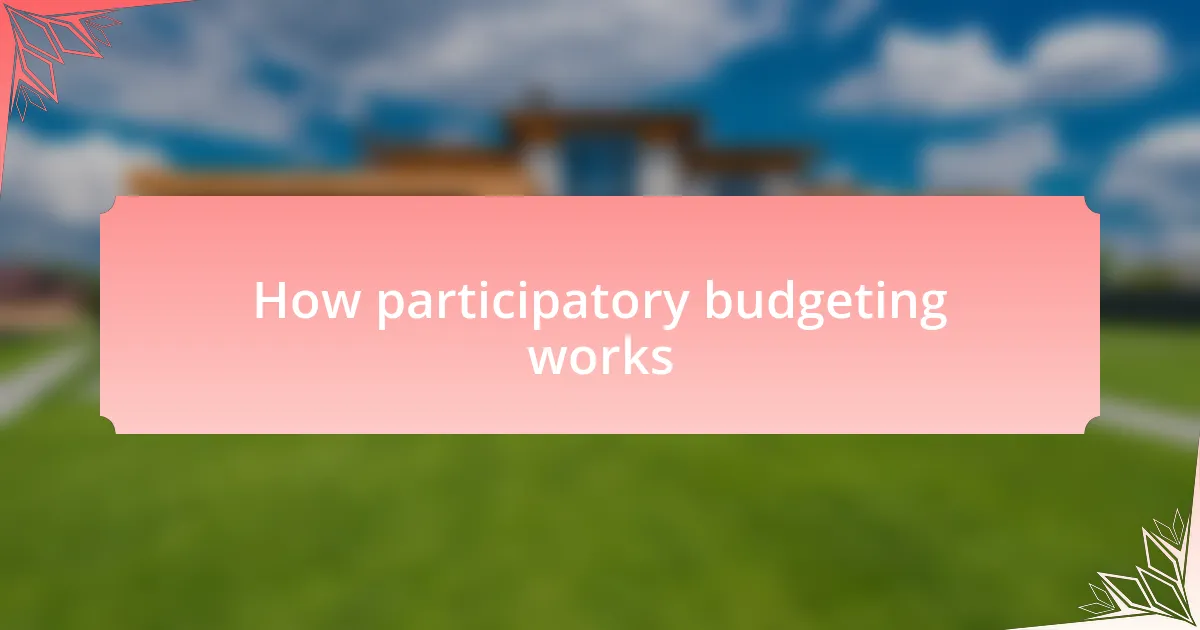
How participatory budgeting works
Participatory budgeting (PB) empowers community members to directly decide how to allocate a portion of public funds. I remember attending a local budgeting meeting where residents gathered to discuss their priorities—hearing voices that often go unheard was truly moving. It struck me how this process shifted our perspective; instead of viewing budgets as rigid documents, we began to see them as living agreements shaped by our collective needs and aspirations.
In practice, the PB process typically involves several steps: community engagement, idea generation, project development, and then voting on proposals. I found the idea generation phase particularly inspiring. People from diverse backgrounds shared their ideas for projects, ranging from park upgrades to educational initiatives. This collaborative atmosphere made me feel that each contribution was valued and integral to our neighborhood’s success.
Once votes are cast, the winning projects become funded and implemented, giving residents a tangible stake in their community. I recall feeling a wave of pride when I saw a park renovation on our street after it was chosen through the PB process. It wasn’t just about a new playground; it symbolized our collective commitment to improving our community and making it a better place to live. Isn’t it remarkable how shared decision-making can turn dreams into reality?
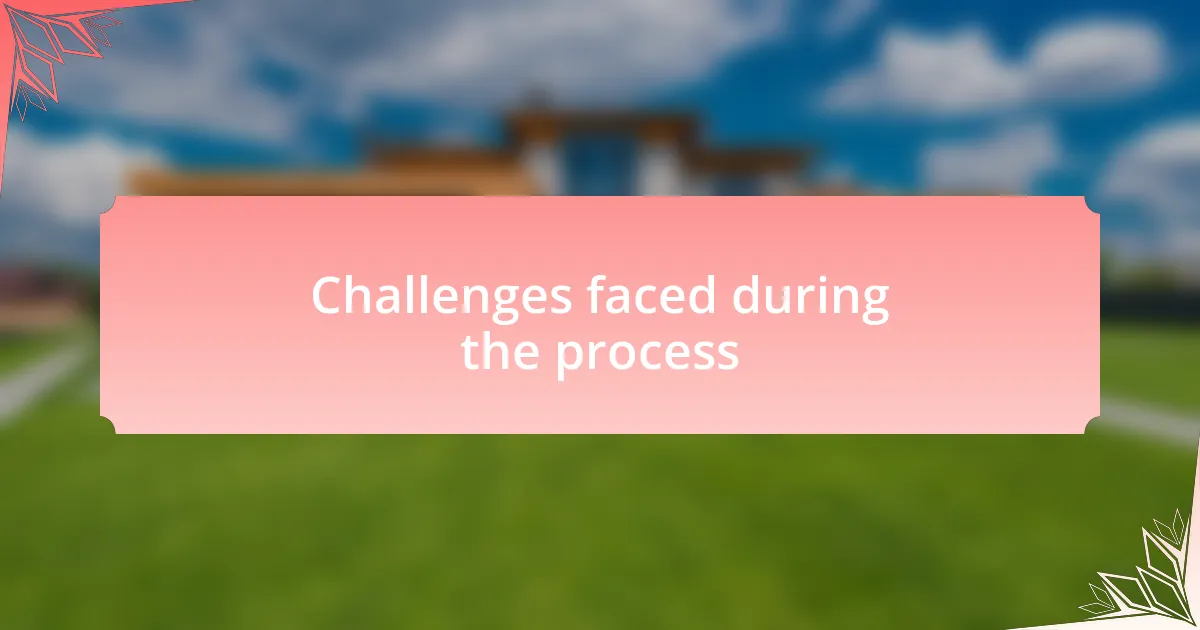
Challenges faced during the process
One of the most significant challenges I encountered during the participatory budgeting process was ensuring that everyone felt empowered to participate. At one meeting, I noticed several community members hesitating to voice their opinions, fearing judgment or feeling unqualified to provide input. It made me realize that fostering an inclusive environment is crucial. How do we spark the confidence of those who might feel marginalized? It requires patience and dedicated outreach efforts.
Another hurdle was balancing competing interests while keeping the discussions productive. I vividly remember a heated debate over whether to fund a community garden or a youth sports program. Each side was passionate, which underscored the need for effective facilitation to navigate these disagreements. What surprised me was how such passionate discussions ultimately reinforced our community bonds, even when we did not agree on every point.
Time constraints were also a significant factor. During the initial planning phase, deadlines loomed, and I felt a palpable pressure to rush through discussions. Yet, I learned that deep, meaningful conversations cannot be hurried. Did we sacrifice quality for speed? I often reflect on how better time management could have led to more thoughtful proposals and a stronger sense of ownership among participants.
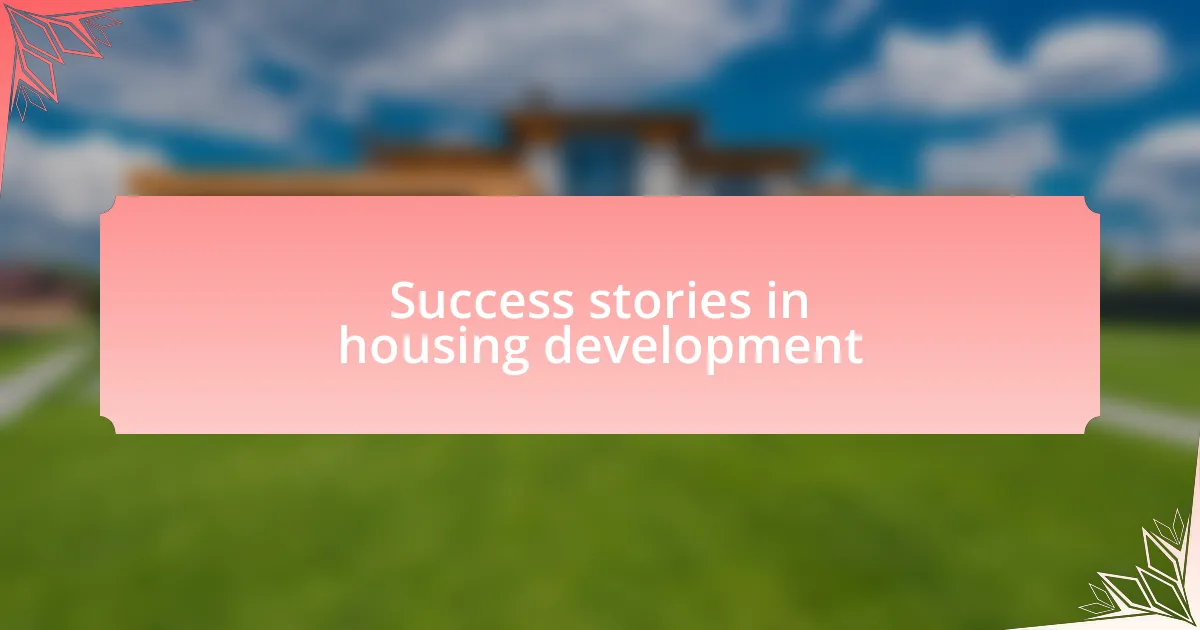
Success stories in housing development
Successful housing development stories often shine a light on the power of community collaboration. In one project I participated in, we collectively transformed an abandoned lot into affordable housing units. The excitement was palpable as neighbors shared ideas and visions, and I still remember the smiles of families as they walked through their new front doors for the first time. It’s incredible how a shared goal can unite a community in tangible ways.
One particularly memorable success was when we secured funding for a mixed-use development that not only provided housing but also included spaces for local businesses. I recall the day we celebrated the grand opening; the energy in the air was infectious. Families moved in, and small business owners set up shop, creating a vibrant hub. It made me realize how integrating community needs into housing projects can foster a sense of belonging—what a rewarding outcome!
Yet, it’s essential to consider that every success story is built on a foundation of challenges overcome. Reflecting on my journey, I often think about the commitment and resilience required to navigate the inevitable obstacles. Why do some communities thrive while others struggle? I believe it often comes down to sustained engagement and a willingness to adapt, aligning our efforts with the evolving needs of those we aim to serve.

Lessons learned from my experience
Pivotal lessons emerged from my experiences in participatory budgeting that reshaped my understanding of community engagement. One striking insight was the importance of listening. Early on, I discovered that some of the most valuable contributions came from individuals who initially seemed hesitant to speak up. I recall sitting in a meeting where a quiet neighbor finally shared a heartfelt story about her family’s housing struggles. That moment not only changed the direction of our discussions but also showed me that every voice holds potential for profound impact.
Another key lesson involved the significance of transparency. During our budgeting process, I emphasized open communication about allocation decisions. I remember the tension in the room when some proposed projects were not funded. Yet, by clearly explaining the reasoning behind our choices, we built trust. How often do we overlook this crucial aspect in our joint efforts? Transparency transformed doubt into collaboration, reinforcing the idea that we were all in this together, working towards a common goal.
Ultimately, I learned that flexibility is a cornerstone of successful community-driven projects. I faced moments when our plans needed to shift unexpectedly due to feedback or changing circumstances. For example, we were initially focused on developing one community center, but after engaging more deeply with residents, we pivoted to create multiple smaller hubs that better served diverse neighborhoods. This adaptability wasn’t just a lesson in project management—it became a personal mantra that shaped how I approach community initiatives.